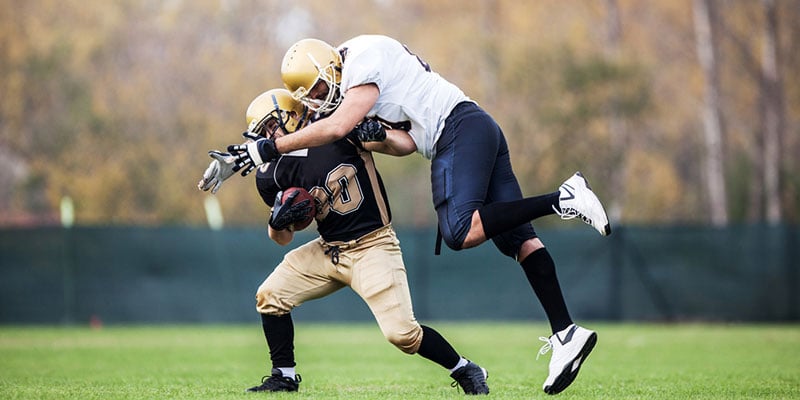
Dr. Daniel Amen cringed when he heard the news that former NFL linebacker Junior Seau had taken his life by pointing a gun at his chest.
“He did what players think you’re supposed to do: Save your brain,” said Amen, a California-based physician and psychiatrist. “They have to learn there’s another way. Don’t give up on your brain while you’re alive. Try to fix it.“
Amen’s research and stated mission — to rehabilitate a damaged brain — gets at the heart of class-action lawsuits filed against the NFL. A master complaint was filed Thursday in U.S. District Court in Philadelphia that laid out the claims of more than 2,000 former football players. In addition to personal damages, the complaint outlines the need for medical monitoring, a costly undertaking that would require the NFL to pay for medical testing and treatment for the duration of a player’s lifetime.
“Guys are scared. The Junior Seau thing kicked it into a whole other category,” said Von DuBose, one of the attorneys representing former players. “There was a lot of cynicism from folks on the outside looking in. But Junior Seau was NFL royalty. When that happened, it took that layer of cynicism off. It really got folks to thinking, wow, this is a real, real problem. This isn’t a bunch of broke, retired guys looking for a quick payday.”
Whether a brain that’s been damaged can truly be fixed is a subject still open to discussion in the scientific community. Amen, though, thinks he’s on the right track and is confident that he can take a player who’s suffered multiple concussions and improve decision-making, reasoning, depression, mood and memory. He’s worked with 117 former NFL players and says eight out of 10 have shown improvement.
“I could care less about the politics or even the lawsuits,” Amen said. “This is a brain-damaging sport. When we started our research, everyone was actively in denial. They’re changing now, and I’m excited about that. But we got to start talking about the next step: Let’s rehab their heads.”
Seau’s suicide has not been linked to head trauma, but his death last month sparked renewed discussion about head trauma in football. Nick Bell, 43, can empathize with what he thinks Seau must’ve felt.
Bell, a running back for the Los Angeles Raiders from 1991 to ‘93, began seeing Amen two years ago. He weighed 435 pounds then, battled depression and had sleep apnea and mood swings. He found himself walking into rooms and couldn’t recall why he’d entered. Even reaching out to Amen was a struggle.
“I had to fight the shame,” said Bell, “especially culturally, of seeing a psychiatrist or psychologist. It’s a real problem because a lot of guys can get help, but they can’t bring themselves to ask for it.”
Bell, who is one of the litigants suing the NFL, doesn’t know how many concussions he endured playing football, but he remembers the first. During his rookie season, he was hit so hard that he ran to the wrong team’s huddle for the next play.
“Back then, you couldn’t tell the coach you had a concussion. There was no way,” he said. “If you did, you’re on the bench and you might be losing your job.”
Bell began a program with Amen that involves supplements, hyperbaric oxygen treatments, fish oil and exercise, all intended to aid the regeneration of the brain cells and boost the neural connections in the brain. Amen said Bell’s most recent testing has shown more than a 30 percent improvement in memory, attention and processing speed.
Amen’s studies have been published in journals, but he says more research needs to be conducted. The medical community’s understanding of brain trauma has grown rapidly in recent years and experts say work like Amen’s is encouraging.
“I think we’re getting there,” said Barry Jordan, a renowned neurologist who studies the effects of brain trauma on athletes. “I think there’s still a lot that we don’t know.”
The need is great, however, as studies have shown strong links between head trauma in football and depression, dementia and chronic traumatic encephalopathy. Half-jokingly, Jordan calls it dementia footballistica.
Amen operates four for-profit clinics, including one in Washington D.C. He says the price of rehabilitating the brain can cost $5,000-$6,000 per athlete. Using hyperbaric oxygen treatments would double the cost.
His clients say the results justify the price tag and they are hopeful the NFL eventually agrees to medical monitoring.
“It’s amazing where I am now compared with where I’ve come from,” said Anthony Davis, the former running back whose USC career earned him induction in the College Football Hall of Fame. “It‘s scary what my head used to be like.”
When Davis first met Amen in 2006, Davis was 54 years old with a brain that looked like that of an 85-year-old. He was more than 100 pounds overweight and diabetic, suffering from sleep apnea and high blood pressure. He’d leave his home and have to return two or more times to make sure he locked the door.
“I’m telling you, if it wasn’t for him, I’d just be deteriorating,” Davis said. “This thing, it’s like a silent death.”
Davis played five years professionally, including two in the NFL. He says he’s “one of the lucky ones” because he had only two diagnosed concussions.
“It took me many years to screw it up,” Davis said, “so it’ll take me some years to rehab it, too, to bring back some normalcy. It‘s a process, but I can feel the results.”
With targeted treatment, you can change your brain and change your life. If you feel that you or a loved one could benefit from an evaluation, contact the Amen Clinics Care Center today online or call (888) 288-9834.





No Comments »
No comments yet.
RSS feed for comments on this post.
Leave a comment